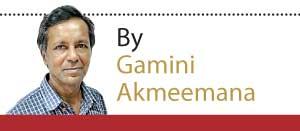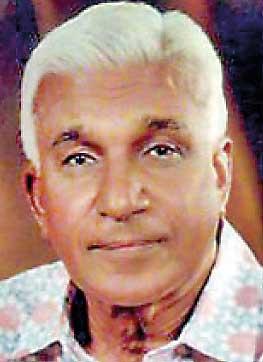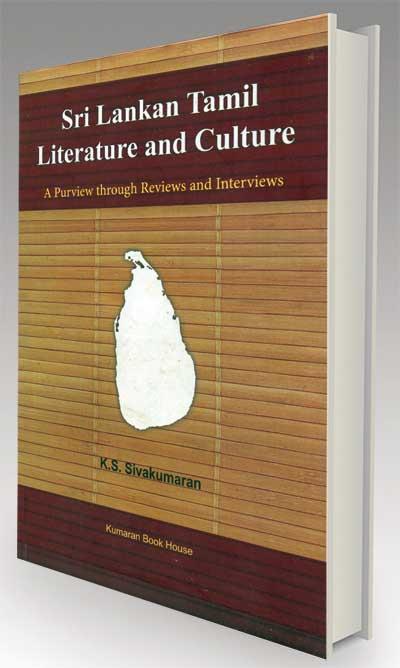Reply To:
Name - Reply Comment
A chronological survey of Lankan Tamil writing by K. S. Sivakumaran
Sri Lankan Tamil Literature and Culture by K. S. Sivakumaran is the latest addition to the series of books published over the past several years. These contain the writer’s articles, literary  criticism and reviews on literature, the cinema and the arts which have appeared in various Sri Lankan newspapers going back several decades.
criticism and reviews on literature, the cinema and the arts which have appeared in various Sri Lankan newspapers going back several decades.
This is a thicker volume than his previous publications because it contains two previous books now out of print – Tamil Writing in Sri Lanka (1974) and Le Roy Robinson in Conversation With K. S. Sivakumaran On Aspects of Culture in Sri Lanka (1982).
As the author puts it in the preface:
“The availability of these books has become essential in view of their importance as sourcebooks to understand, especially the Lankan Tamil cultural scene in the context of Sri Lankan culture.”
As wide-ranging as ever, Sivakumaran covers a multitude of subjects – from the earliest Lankan Tamil fiction, both in novel and short story form, norms for poetry, popular Indian magazines and local journals, Hill Country writings, notes on books on Tamil fiction by Prof. K. Kailasapathy and Prof. K. Sivathamby, major trends in contemporary Tamil writing, plus many reviews of Tamil novels and short stories and an interview given by the author to Le Roy Robinson of the Faculty of Economics, University of Nagasaki, Japan, and a discussion of a Tamil-Sinhala dictionary.
In his foreword to this volume, the late Mervyn De Silva (Former Editor-in-chief, the Associated Newspapers of Ceylon Ltd.), notes that the author is “A student of Tamil literature and a keen observer of the Tamil
cultural scene.”
In his introduction, Prof. K. Kailasapathy, the then Vice-Chancellor of the Jaffna Campus, University of Sri Lanka, says: “One of my most pleasant memories of the years I spent on the editorial staff of Thinakaran (1957-1961) was my close association with Tamil writers, many of whom played a prominent
 |
| K. S. Sivakumaran |
part in the Movement for an indigenous Tamil Literature in this country. The young writers who initiated this movement and responded to it in the mid-fifties could hardly have imagined that it would have grown to such proportions and that its participants would compel recognition for themselves in India and elsewhere…I came to know K. S. Sivakumaran as a young contributor to the Thinakaran.
He was then bubbling with ideas and full of enthusiasm. I was then fresh from the university and remember having many a discussion with him on literary issues. It is also quite possible that I had imperceptibly persuaded him to concentrate on literary criticism rather than ‘creative’ writing in which he was bent upon at that time.”
We’ll never know if Prof. Sivathamby was right. What is clear is that his ‘imperceptible persuasion’ has bequeathed to this country’s literary heritage a body of invaluable writing in the form of literary criticism, reviews and the journalism of K. S. Sivakumaran.
The first Tamil novel in Sri Lanka goes back to 1891 when S. Innasittamby of Trincomalee adapted into Tamil a Portuguese novella called Orzon and Valentine. The second too is attributed to a writer from Trincomalee, titled Mohanangi and published in 1895. The first Lankan Tamil woman novelist was S. Sellammal, whose Rasadurai was published in 1924.
 The author mentions the pioneering attempts in short fiction, too, noting that the pioneers in this sphere were also the ‘leading lights in Tamil literary criticism in Sri Lanka.
The author mentions the pioneering attempts in short fiction, too, noting that the pioneers in this sphere were also the ‘leading lights in Tamil literary criticism in Sri Lanka.
People like S. Sivapathasunderam, S. Vythilingham and Ilangayrkone wrote on literature and criticism.”
Moving on to the new poetry, he writes:
“How to reconcile modernity with the conventional poetic tradition is a major question for the Tamil poets today, and writes about ‘Oru Sila Vithi Ceivom’ by Murugaiyan which is ‘both a critique and a pace-setter for the avant-garde.’
He states that the contemporary history of Tamil literature started in 1948, and subdivides it into three phases, from 1948 to 1970, adding that “the story of the Tamil literary movement in Sri Lanka is the story of the strength gained by the progressive writers of this country.”
71 novels, 57 short story collections and 98 anthologies of poetry were published between 1948-70, but the author notes that though only one publishing house was keen on publishing creative writing, “the quality of book production compares well with that of South India but the Tamilnadu’s system of distribution is hard to beat.”
He further notes that sales were poor because ‘these books are not tied up with the nation’s education system. Only a very few books by Ceylonese have been recommended as Tamil texts in higher forms and not a single Ceylonese fiction had been prescribed as a Tamil text. Even the libraries did not display Ceylonese books. Another reason why Ceylonese Tamil fiction is not widely read is because of its lack of popular appeal.’
Moving on to magazines, the author notes the popularity of Indian magazines in Tamil over here due to their ‘appeal to the cheap escapist nature in man’ and adds that while literary magazines such as Manithan, Thamarai and Kanaiyali too, are available, “a majority of Tamil readers in Ceylon have not heard of these magazines at all.”
While the Tamil magazines produced locally have better quality, ‘the tragedy is that nobody reads them except the writers who write to these magazines.’
Interestingly, names of Lankan rivers figure prominently in local Tamil journalism. Ma Veli (Mahaveli) edited by C. V. Velupillai and Kalani (Kelani) published from Kilinochchi are two magazines which speak of national integration.
The Tamil writers of the hill country are a neglected lot, though they have been writing for half a century, publishing journals like ‘Loka Upakari’, ‘Amirtha Gunabodhini’ and ‘Anantha Bodini.’
The lengthy interview done by Le Roy Robinson runs to 120 pages, more than half the book, with an introduction consisting of this relatively unknown American academic and specialist on Asian literature written by the late Ajith Samaranayake.
Robinson is chiefly responsible for introducing Lankan writers and others associated with culture to the world at large. The Nagasaki University where he was teaching at the time was producing four journals in English.
Sivakumaran, K.S. Sri Lankan Tamil Literature and Culture, 2020 Kumaran Book House LKR 950.